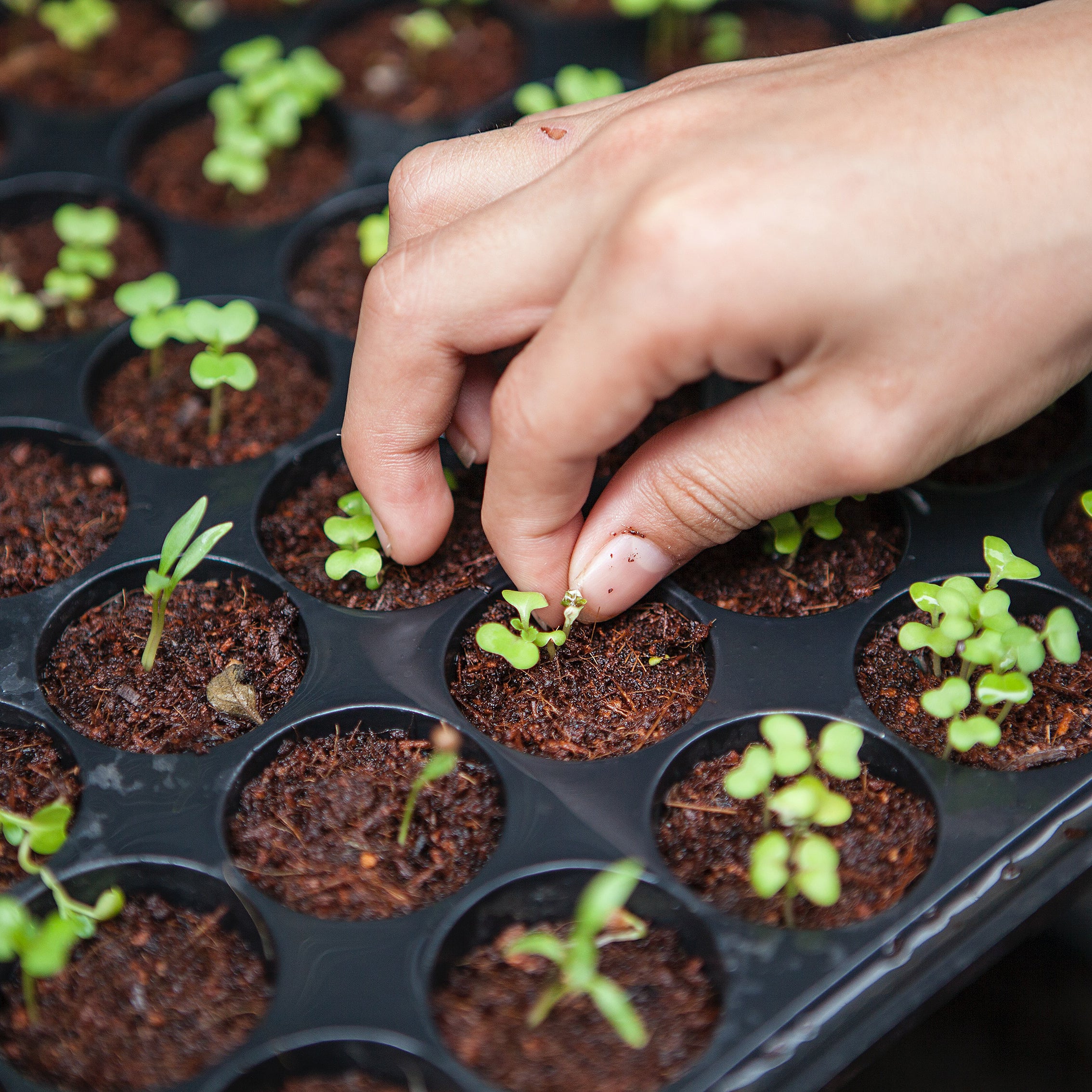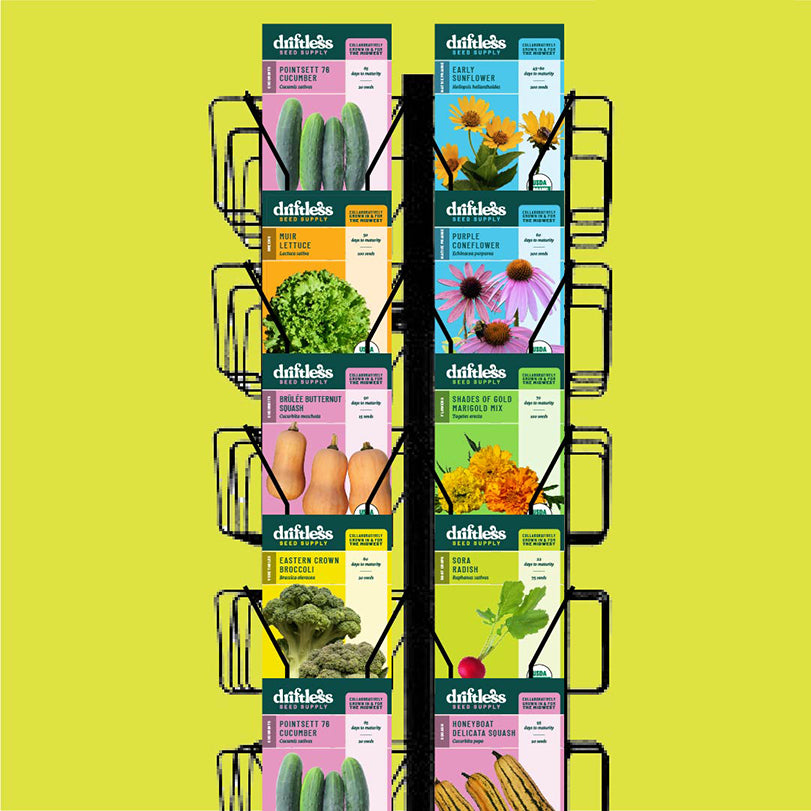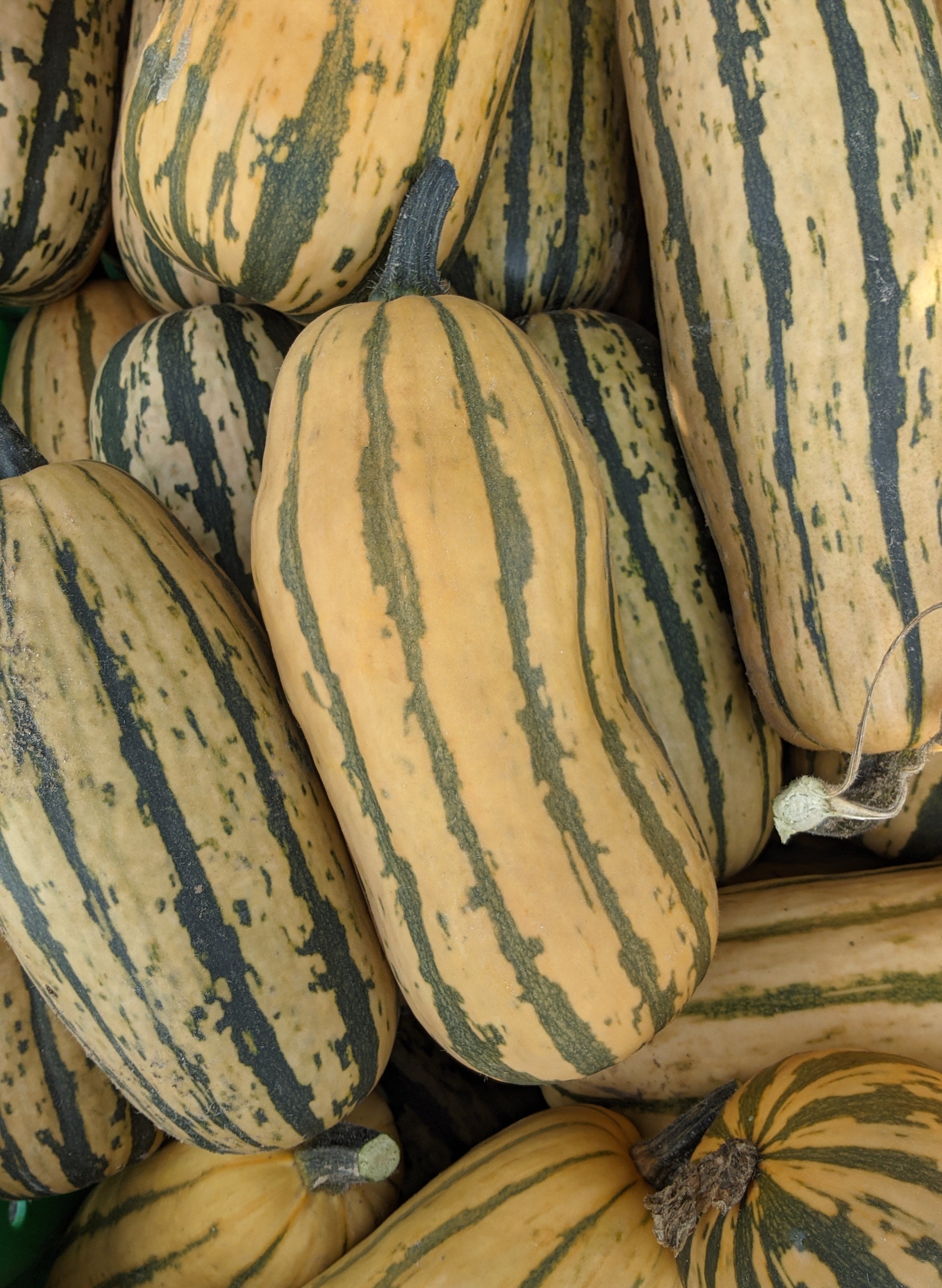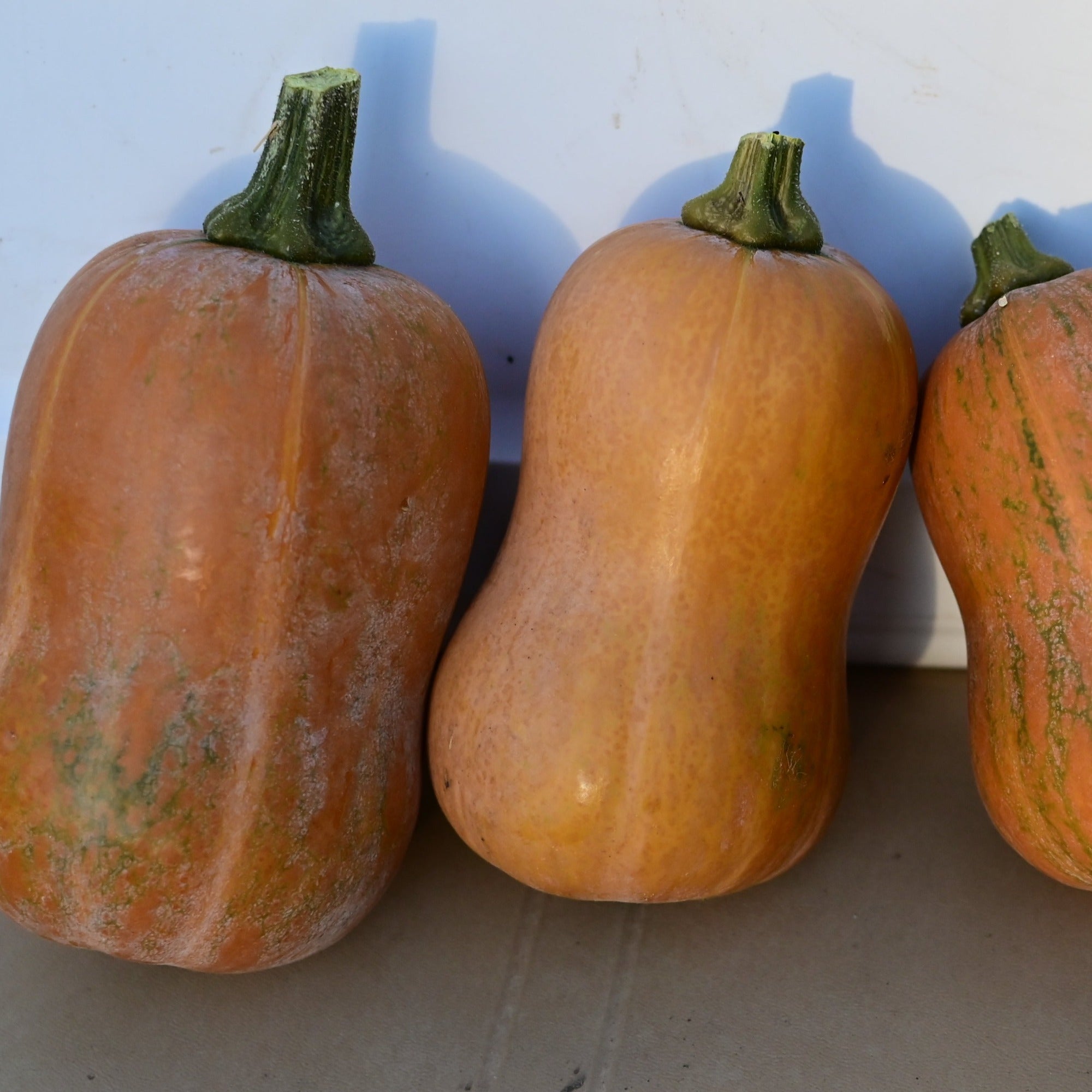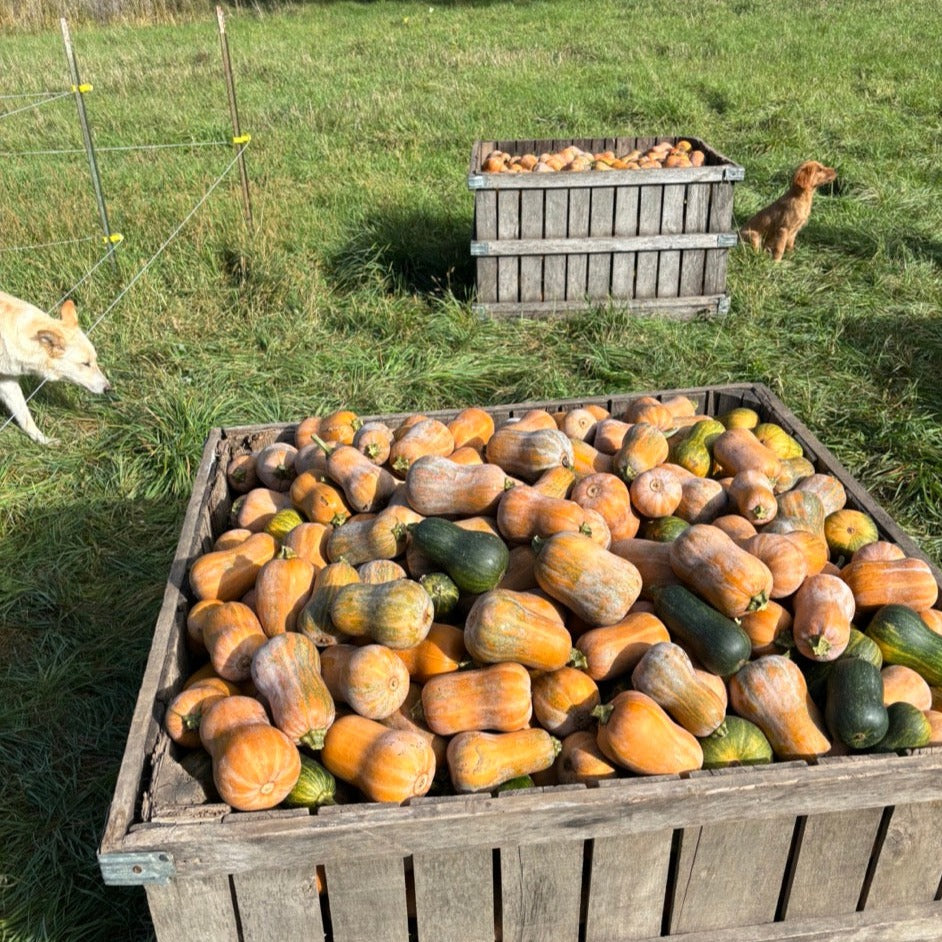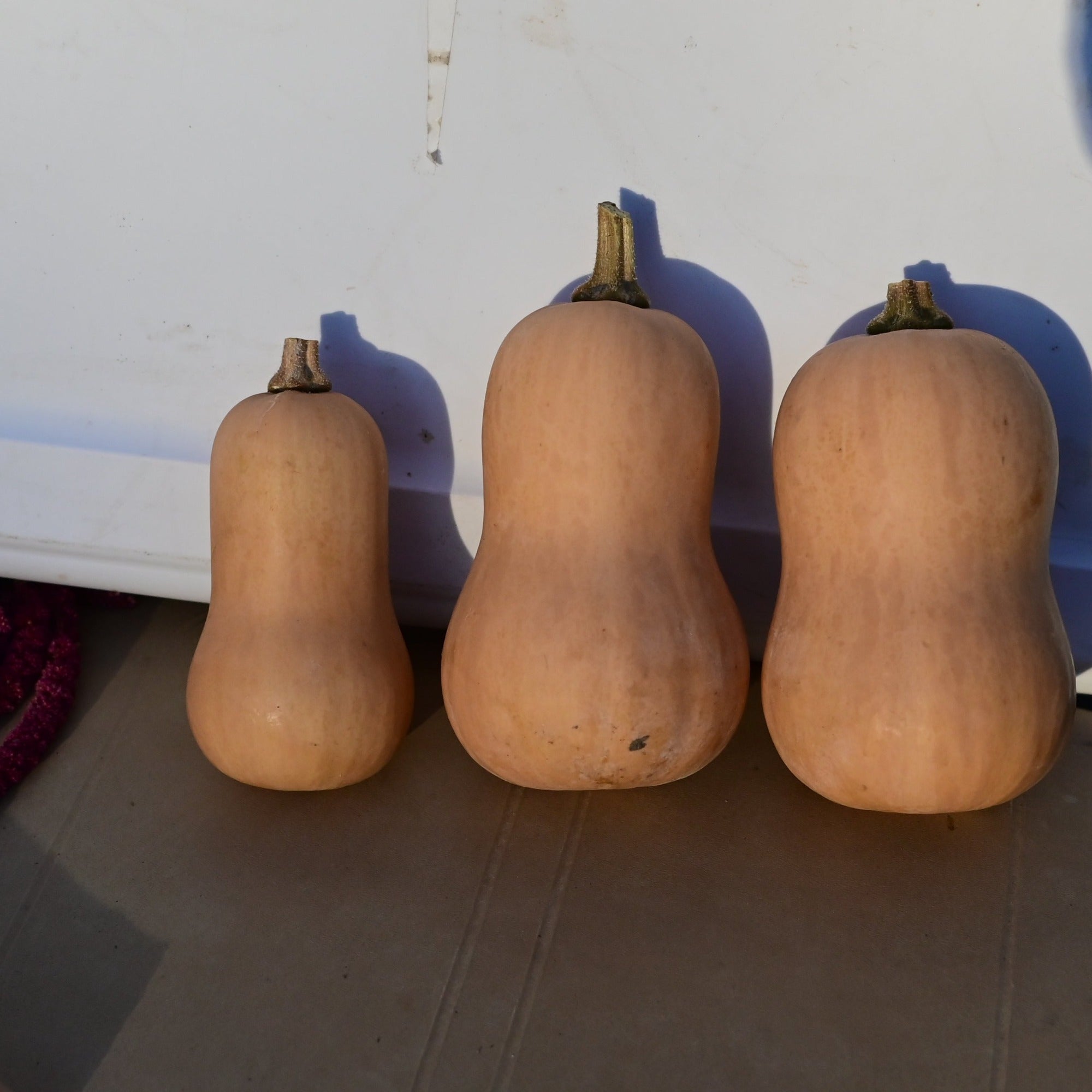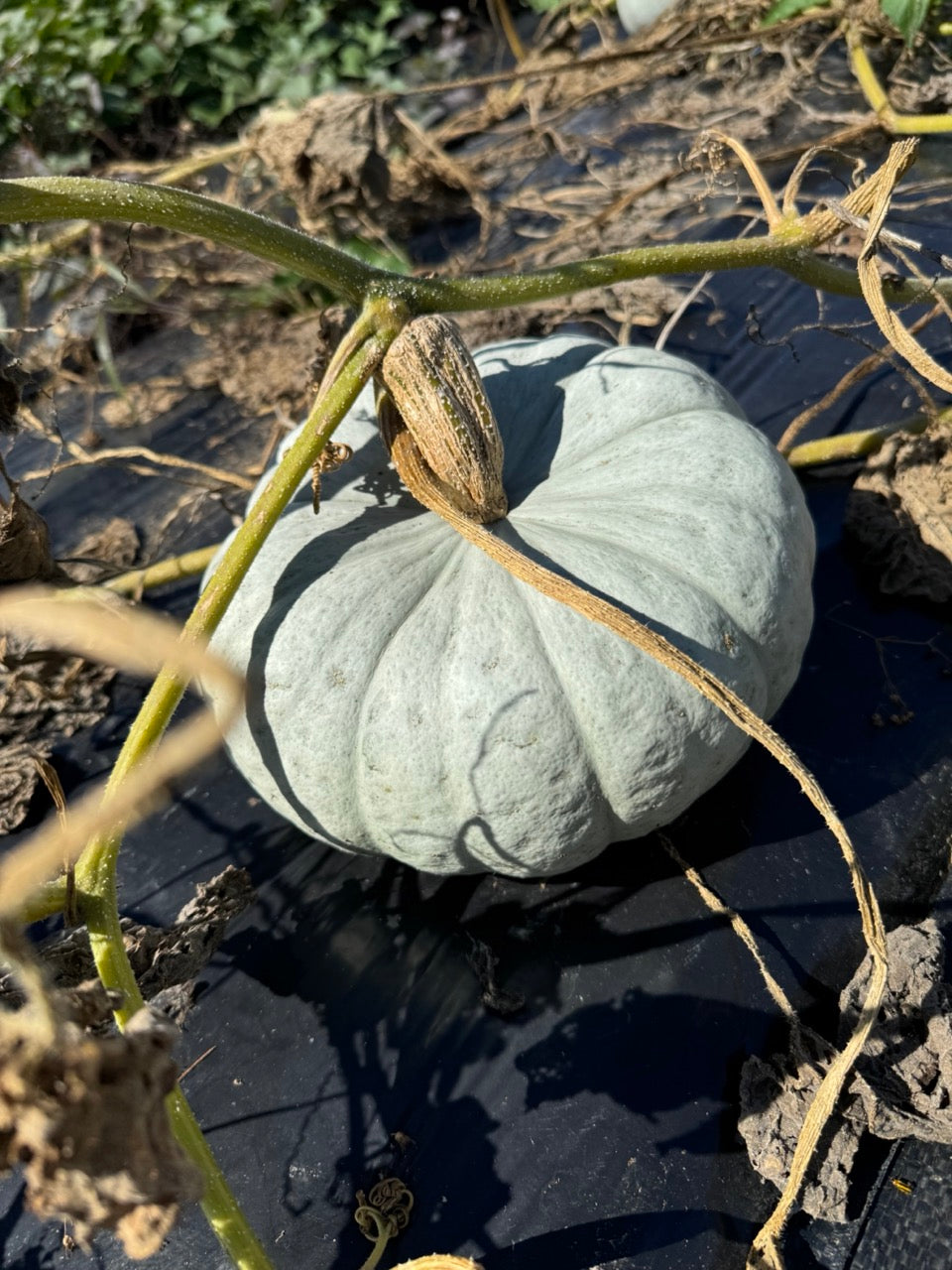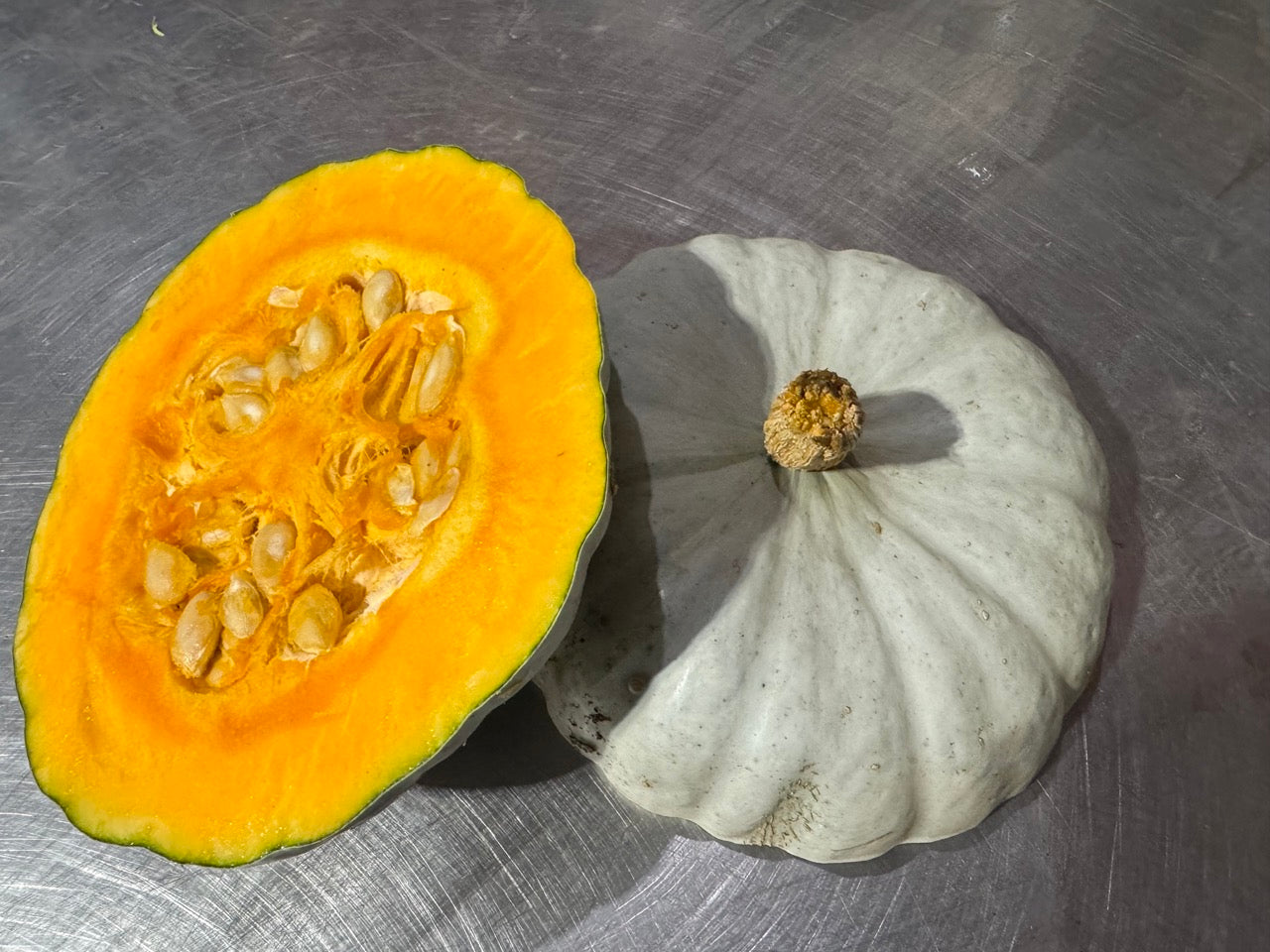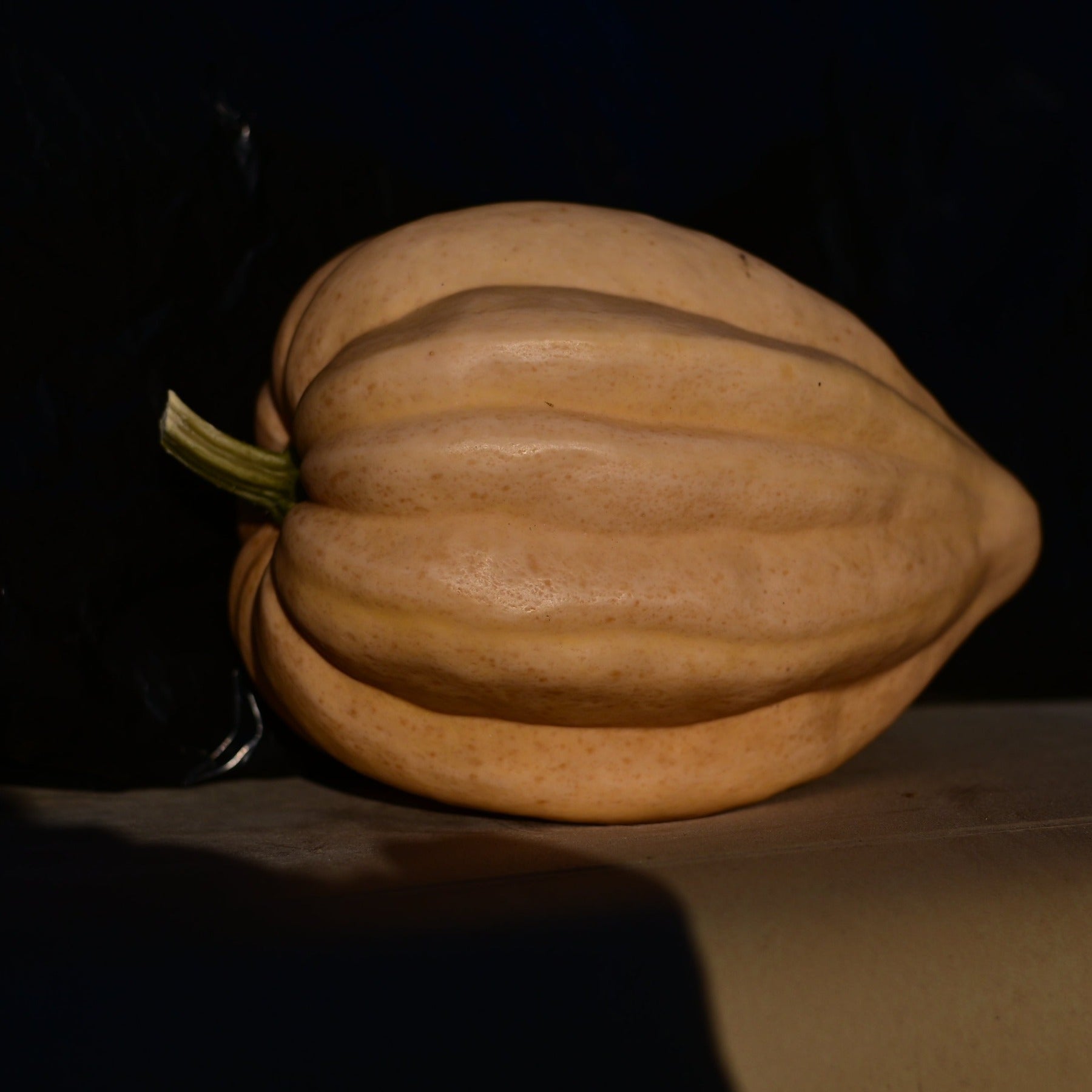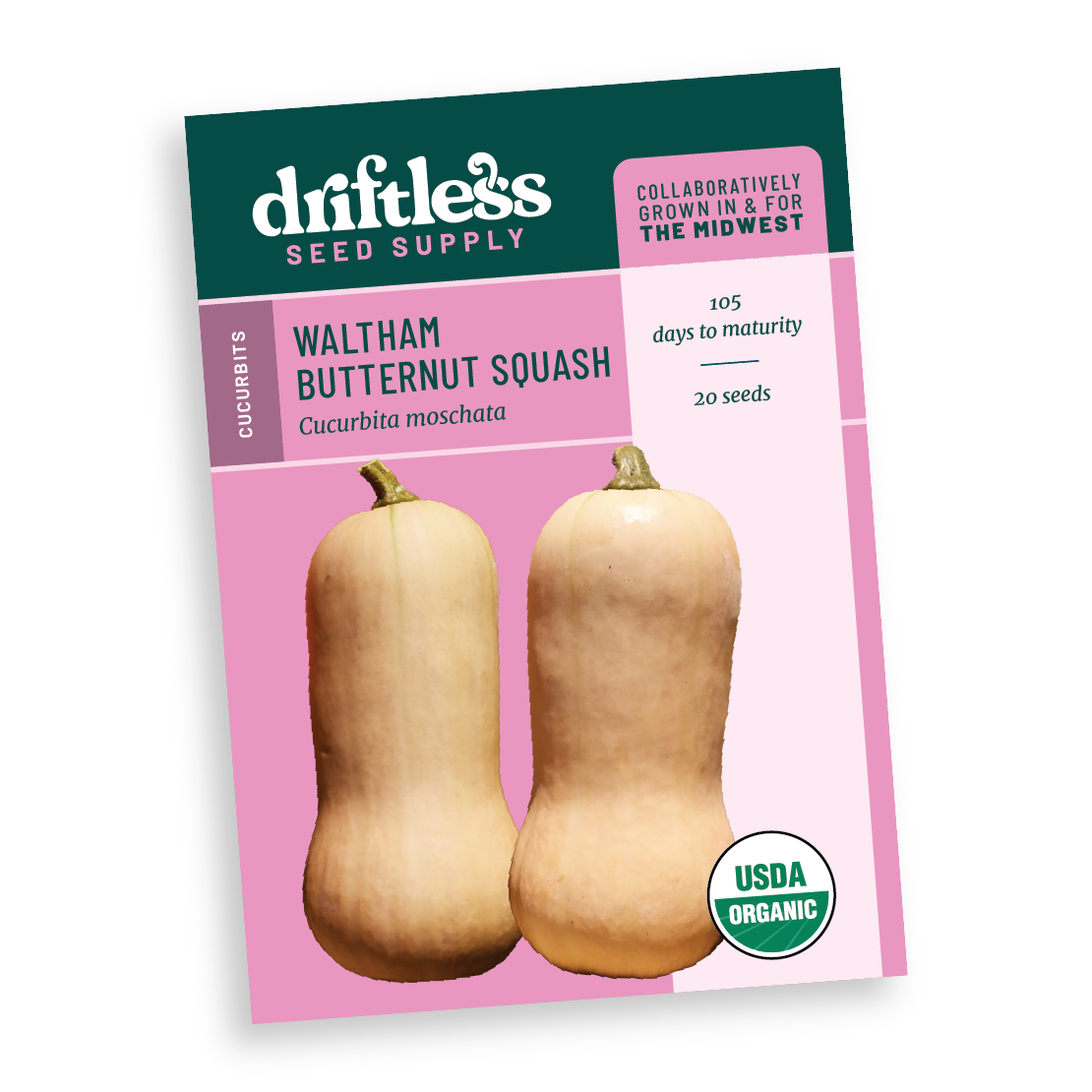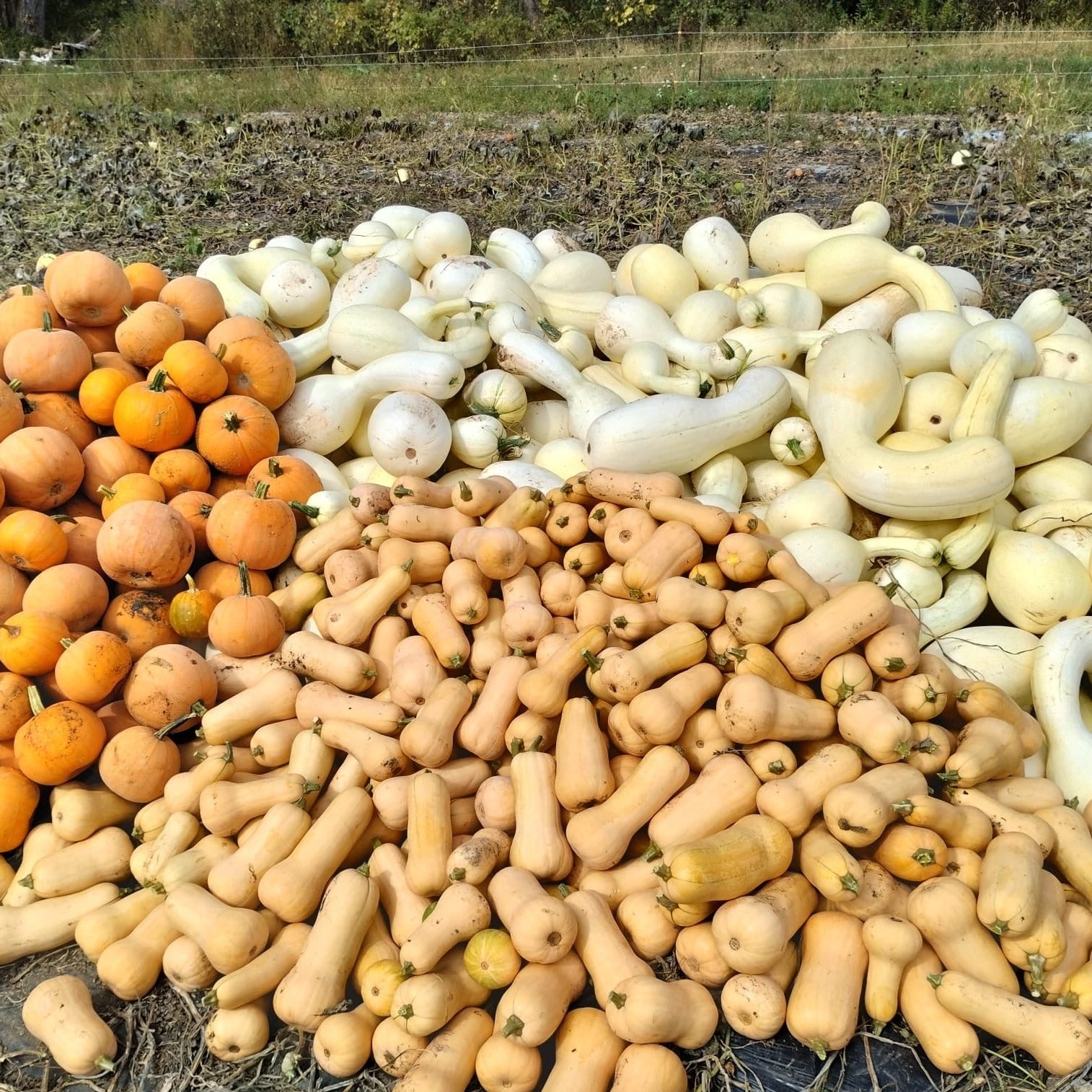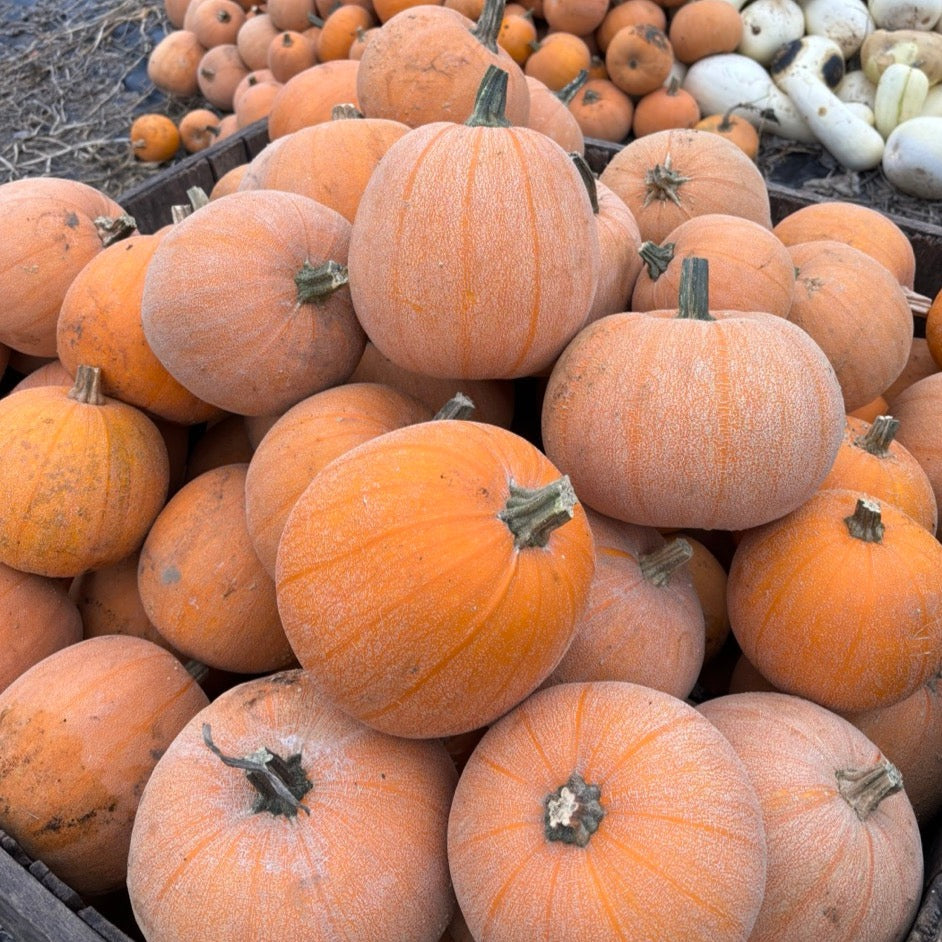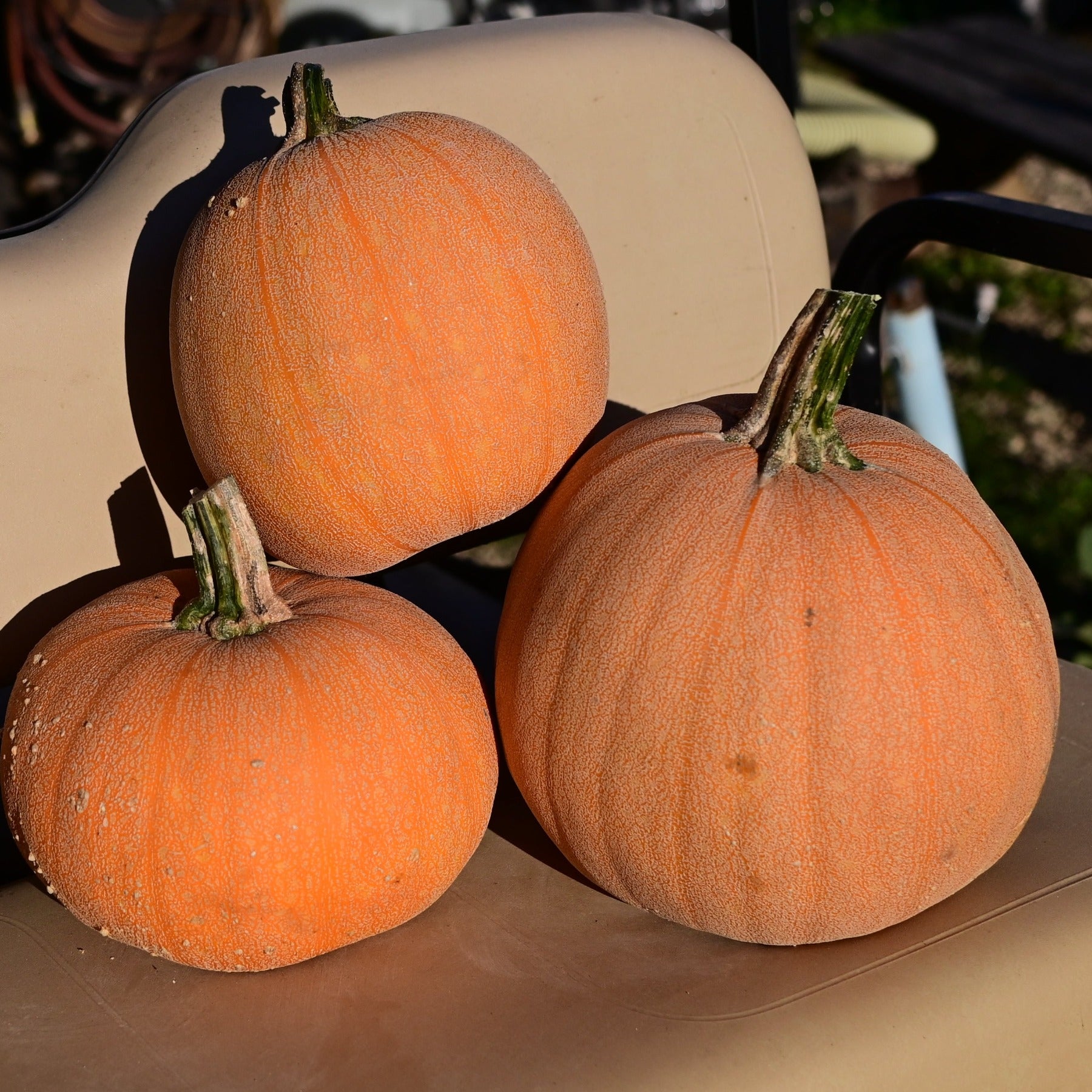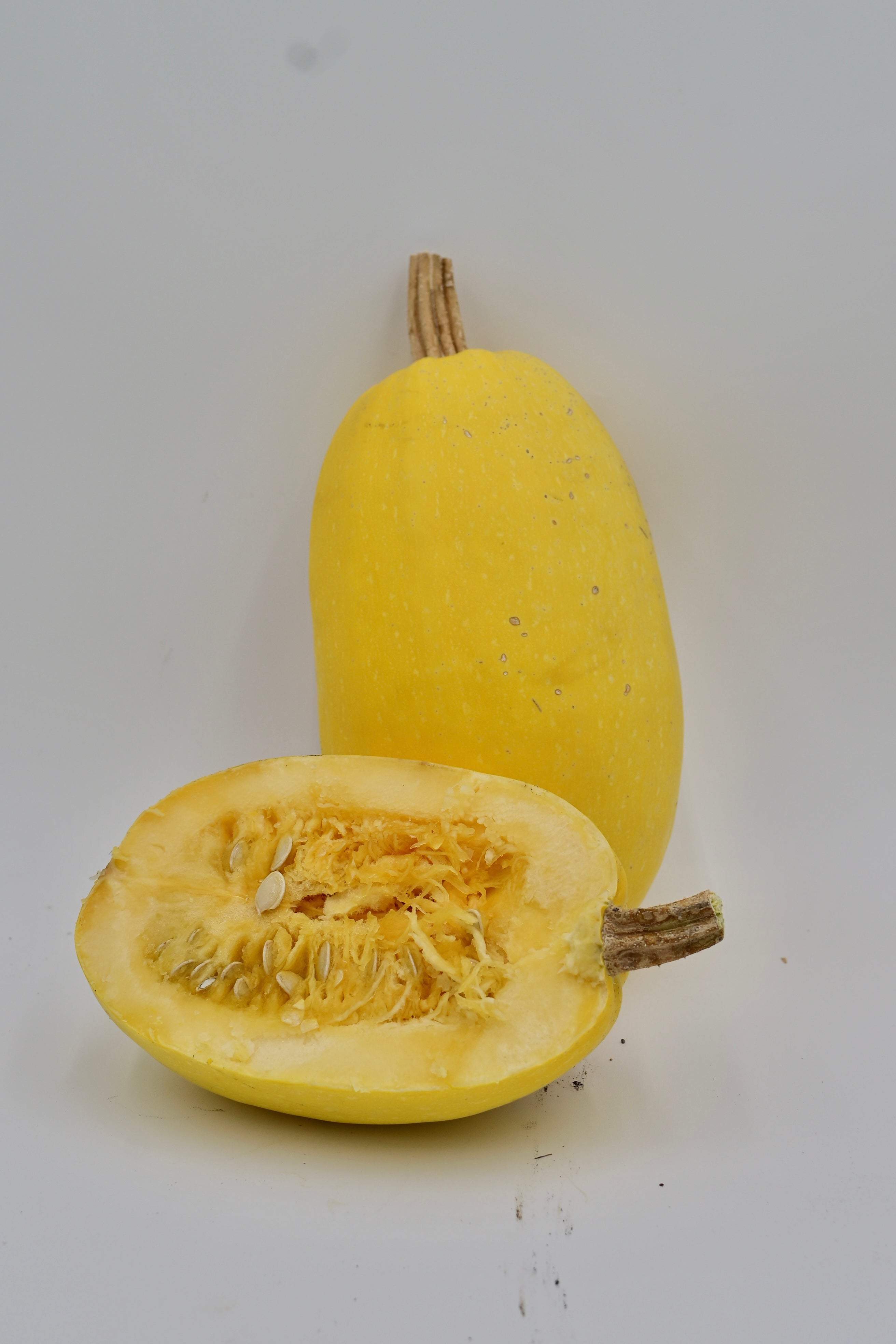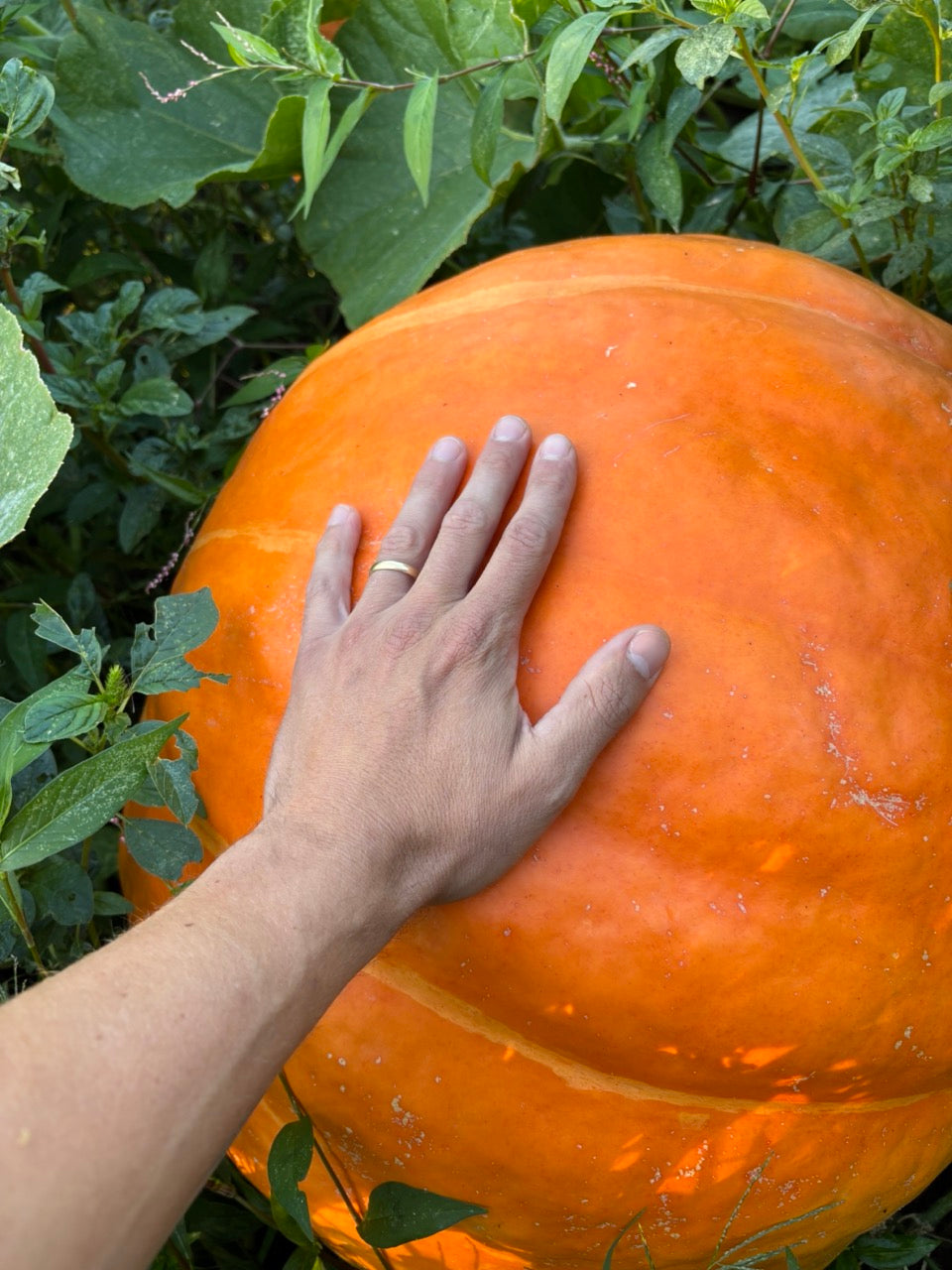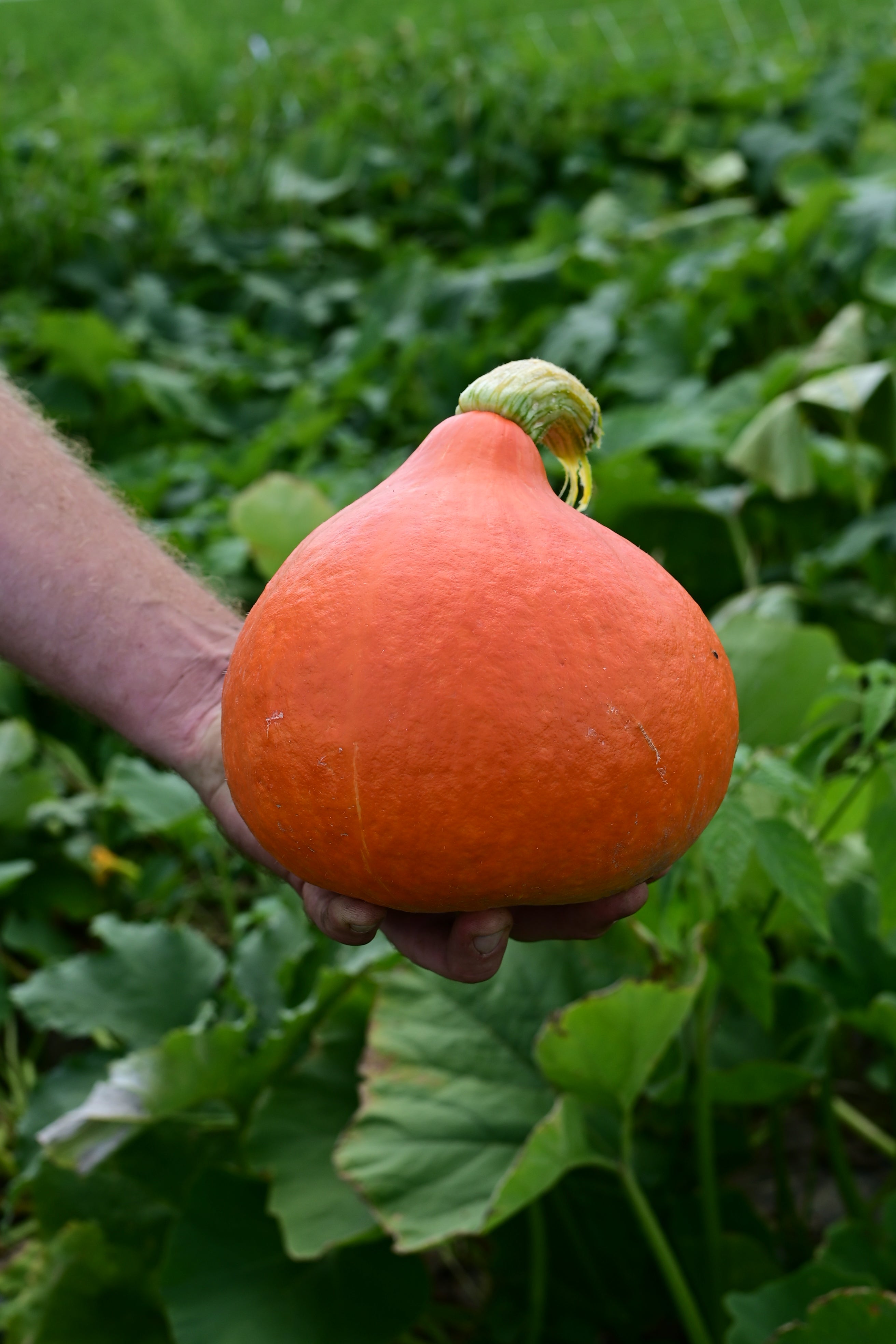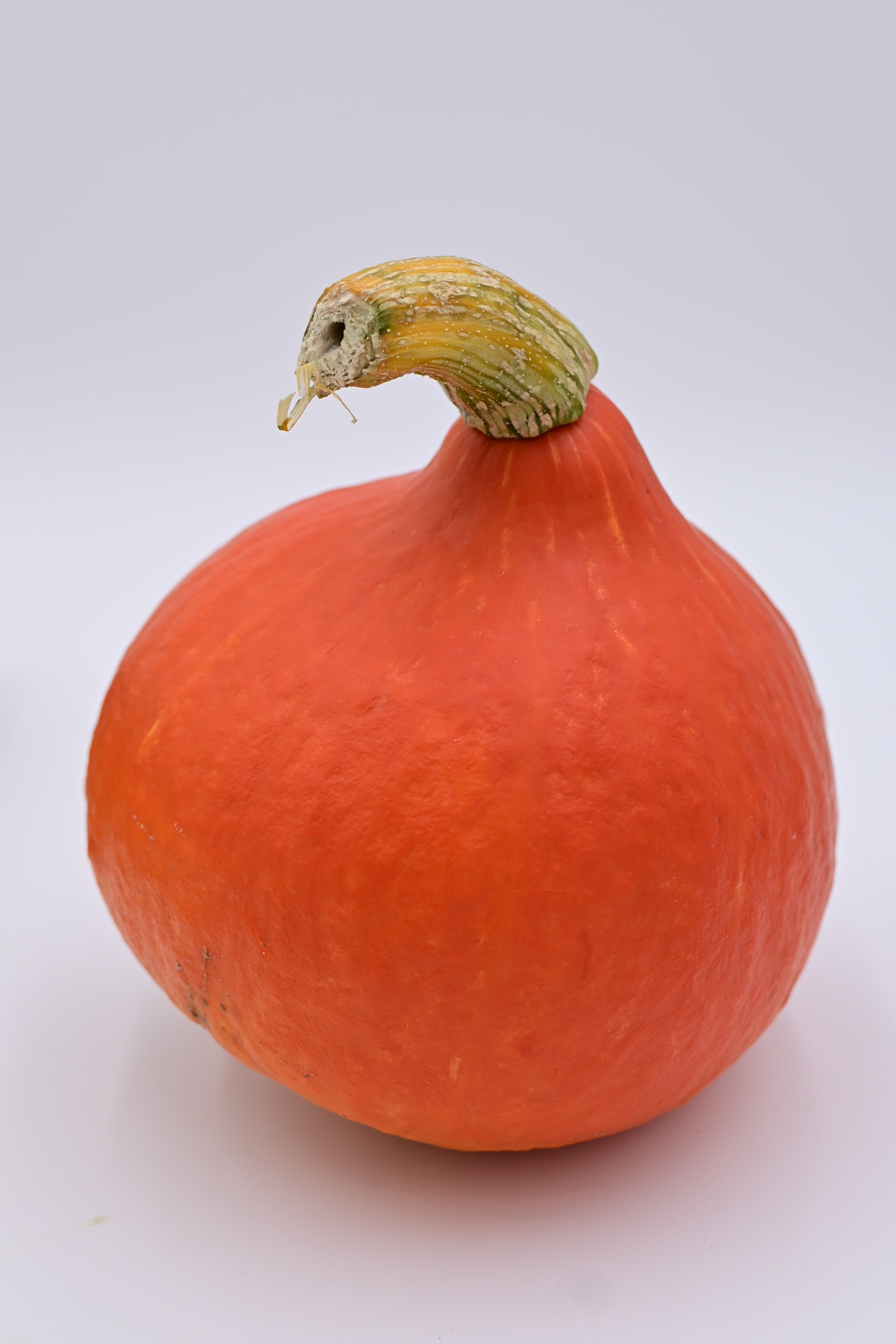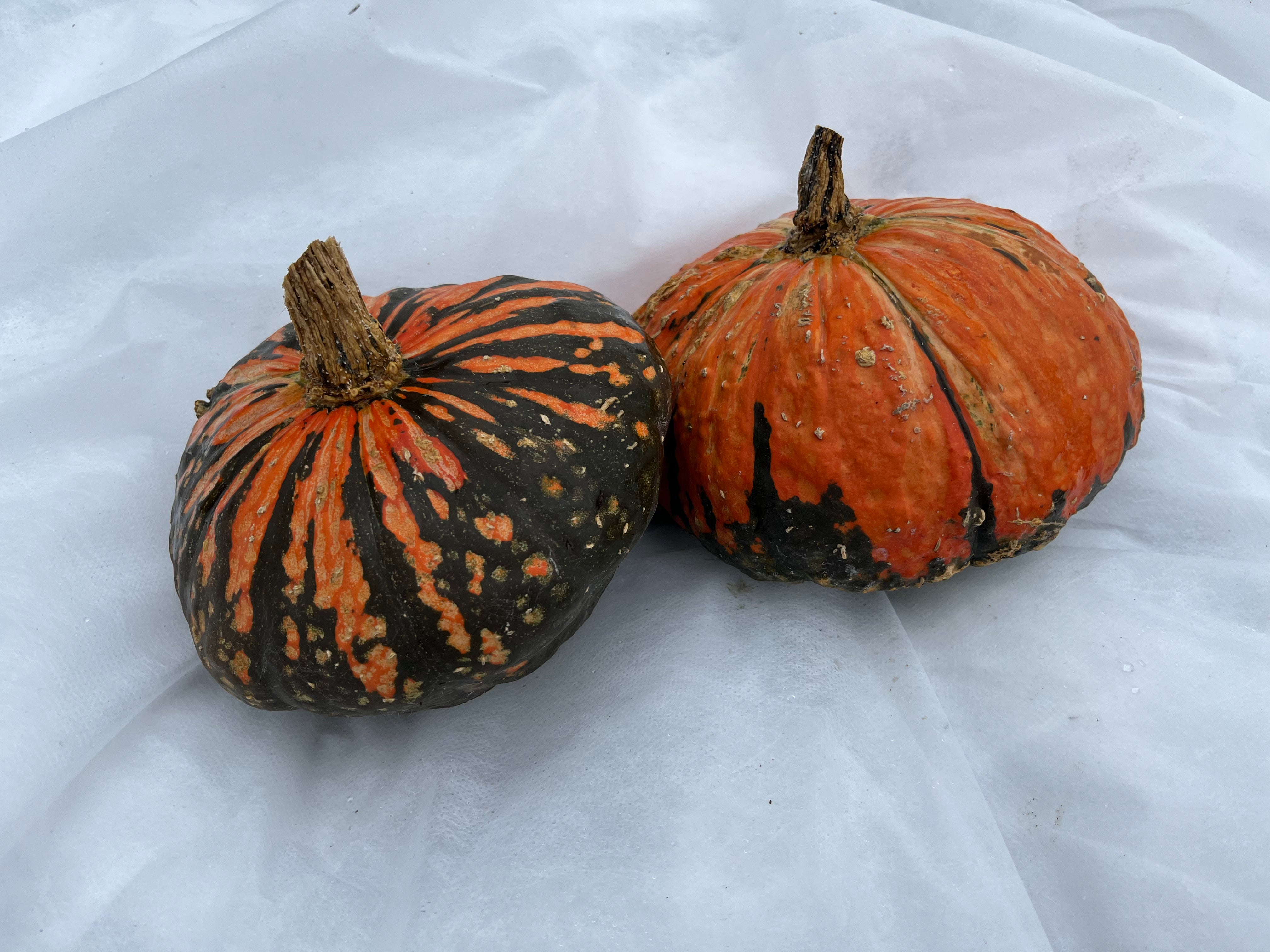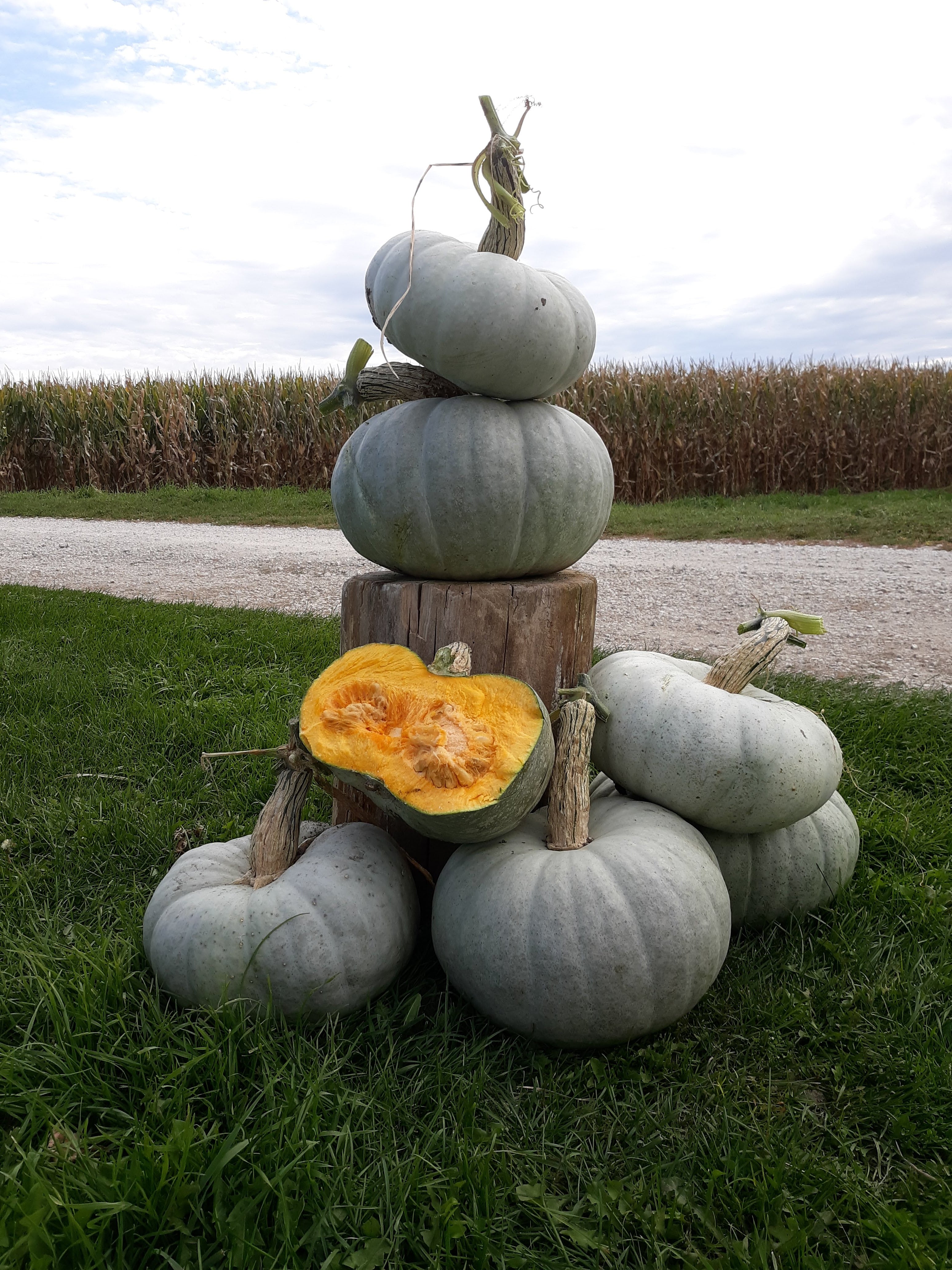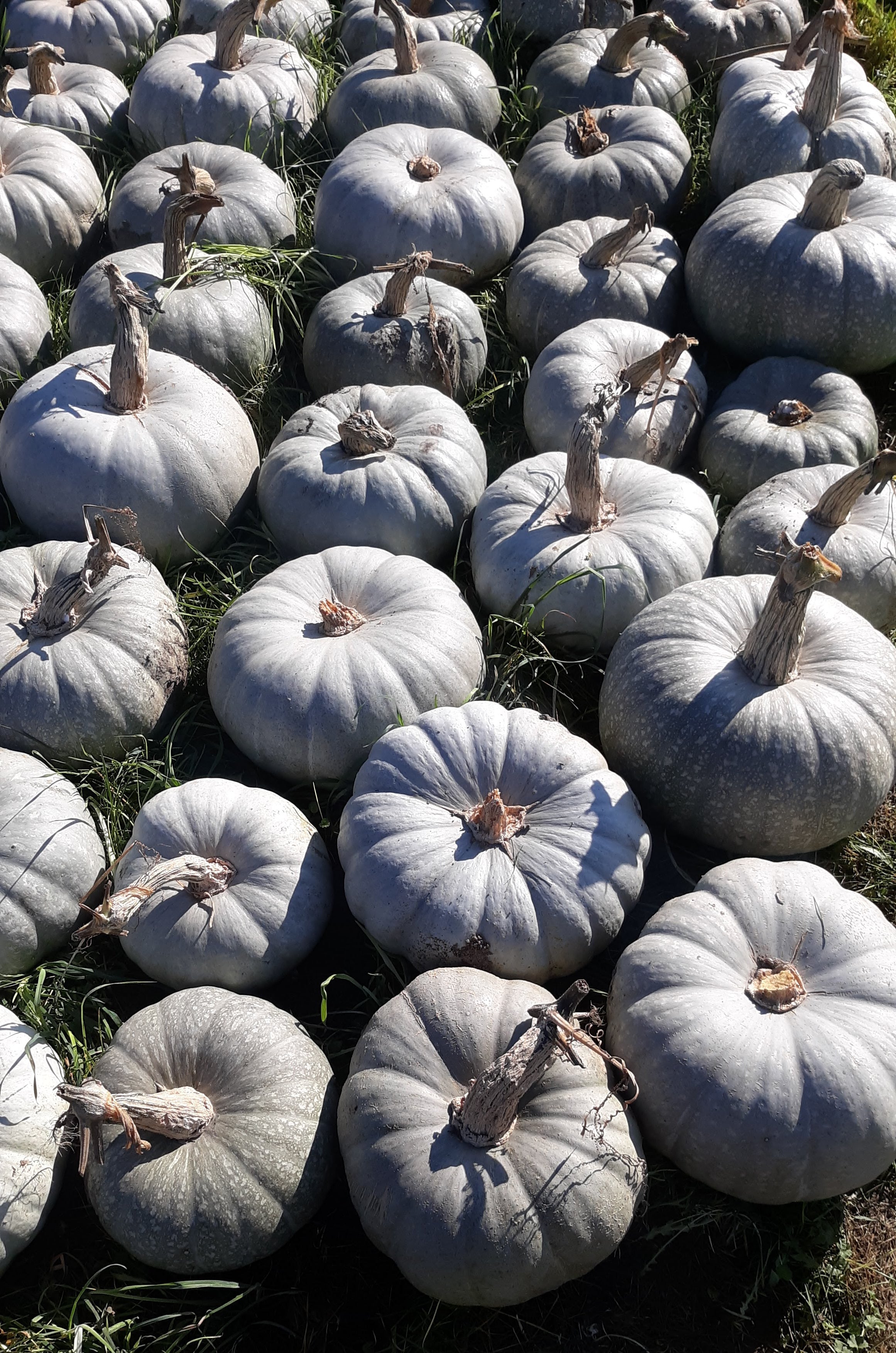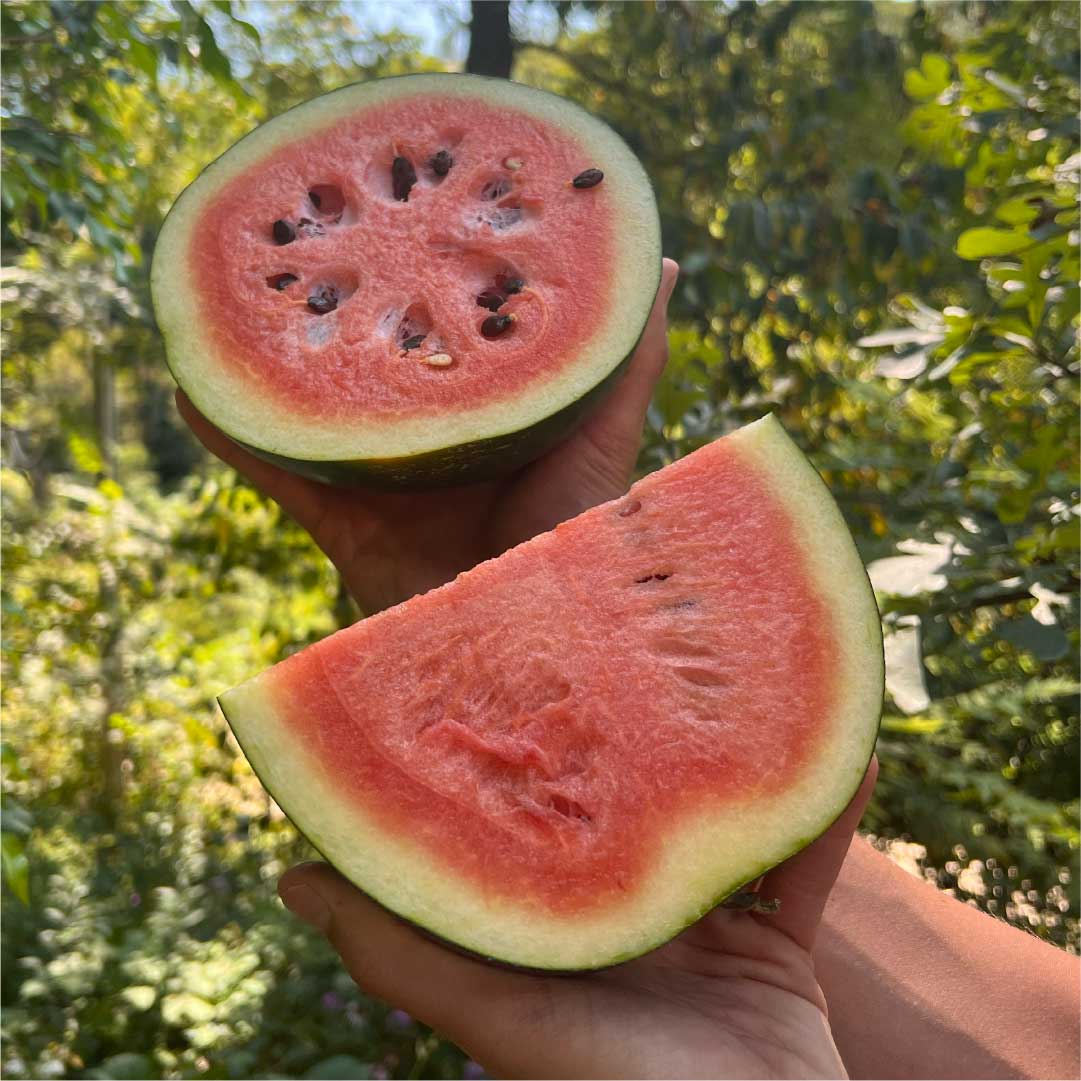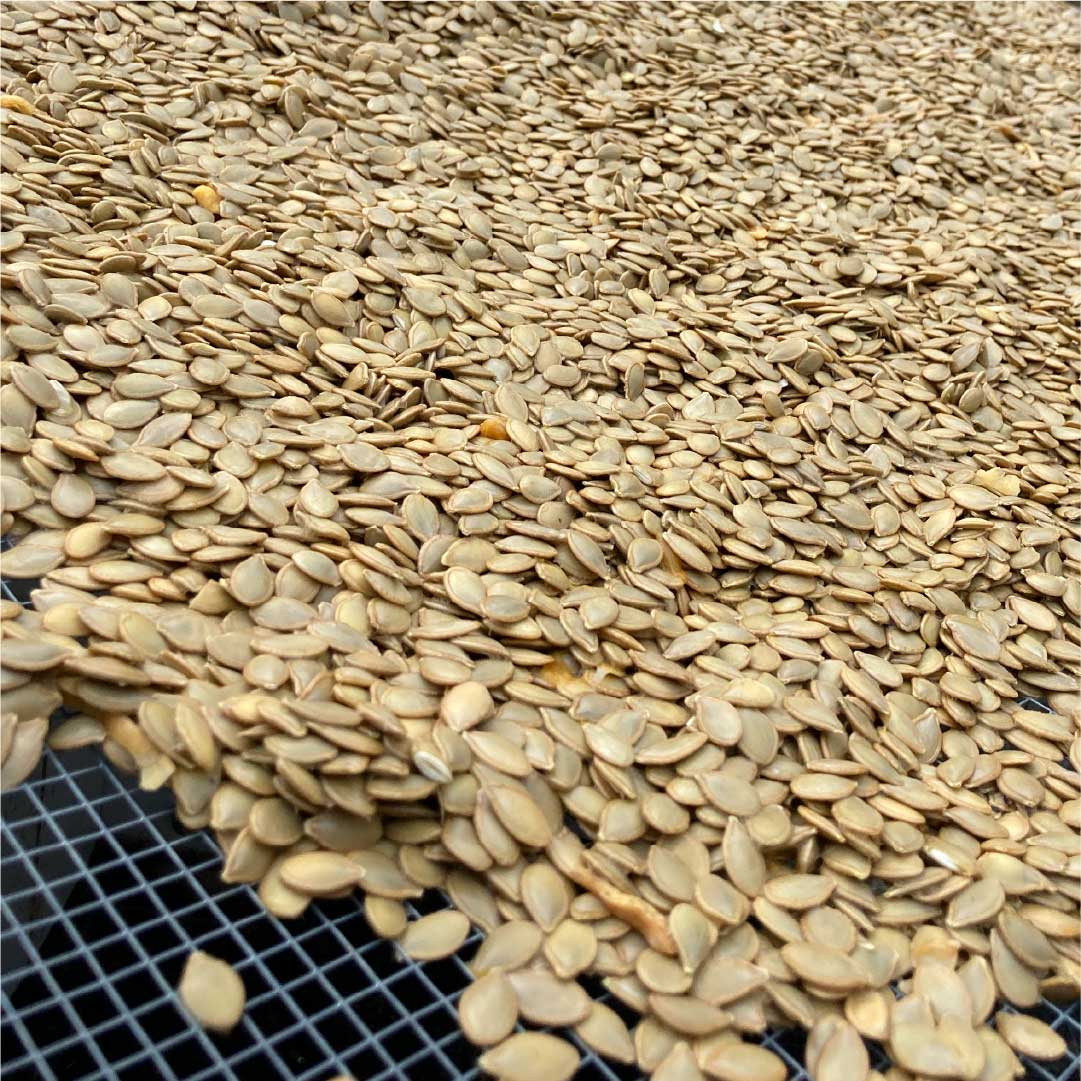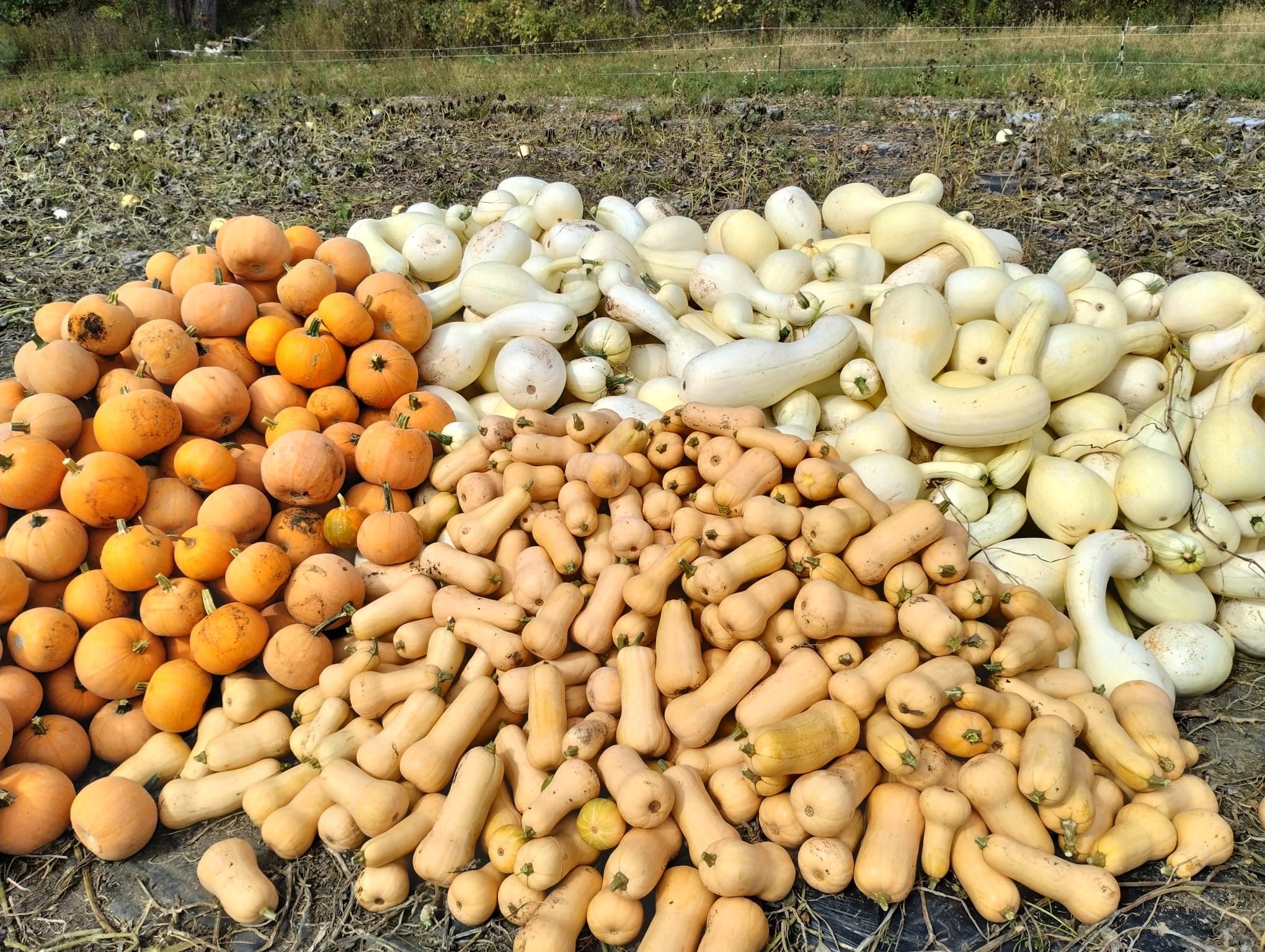
Driftless Seed Supply Grower Resources
Winter Squash and Pumpkin Growing Resources
Historical and Cultural Significance
- Winter Squash: Native to the Americas, winter squash has been a staple in Indigenous diets for thousands of years. It was traditionally grown as part of the Three Sisters agricultural system, alongside corn and beans.
- Pumpkins: Also originating in North America, pumpkins have been cultivated for their edible and ornamental value. They hold a special place in North American culture, especially during Halloween and Thanksgiving.
Types and Cultivation
- Winter Squash Varieties: Include butternut, acorn, delicata, spaghetti, and Hubbard, each with unique flavors and textures.
- Pumpkin Varieties: Range from small, decorative types to large, carving pumpkins, and sweet varieties for pies.
- Cultivation: Both require fertile, well-drained soil and warm temperatures for optimal growth. They can be direct-seeded or transplanted.
Planting: Timing, Spacing, and Depth
- Timing: Plant after the last frost when the soil has warmed.
- Spacing: Depends on the variety. Bush types need less space, around 2’ between plants and 4-6’ between rows, while vining types require more room to spread, at least 2’ in row and often 8’ or more between rows.
- Depth: Plant seeds 1 inch deep in the soil.
Irrigation
- Provide consistent moisture, especially during dry periods. Avoid overhead watering to prevent leaf diseases.
Fertilization
Use a balanced fertilizer at planting. Side-dress with a nitrogen-rich fertilizer as the vines begin to grow.
For pumpkins and winter squash, specific fertilizer recommendations should ideally be based on a soil test. However, here are general guidelines for NPK (Nitrogen, Phosphorus, Potassium) fertilization per acre:
Nitrogen (N):
- Pre-Planting: Apply 50 to 60 pounds of nitrogen per acre before planting.
- Side-Dressing: An additional 30 to 50 pounds of nitrogen per acre can be side-dressed when the plants begin to vine or after fruit set, depending on the initial soil fertility and plant needs.
Phosphorus (P):
- Apply 50 to 100 pounds of P2O5 (phosphorus pentoxide) per acre, based on soil test results. In soils with adequate phosphorus levels, a lower application rate may be sufficient.
Potassium (K):
Apply 100 to 150 pounds of K2O (potassium oxide) per acre. The exact amount will depend on soil test results and the specific needs of the crop.
- Micronutrients:
- Ensure balanced micronutrient levels in the soil, as they are also crucial for the healthy growth of pumpkins and winter squash.
These are general recommendations, and the exact fertilizer needs can vary based on soil type, previous crop history, and specific variety requirements. It's crucial to conduct a soil test for accurate fertilizer application.
Pest and Disease Management
Preventative Measures and Organic Pesticides for Winter Squash Pests
Squash Vine Borers:
- Preventative Measures: Use floating row covers to exclude the moths that lay eggs. Remove the covers when plants start to flower for pollination.
- Organic Pesticides: Apply Bacillus thuringiensis (Bt) as a preventative measure, especially when larvae are small and just beginning to bore into stems.
Cucumber Beetles:
Preventative Measures: Use row covers until flowering. Practice crop rotation and keep the field free from plant debris.
Organic Pesticides: Neem oil or pyrethrin can be effective. Insecticidal soaps may also help reduce populations.
- Aphids:
- Preventative Measures: Encourage beneficial insects like ladybugs and lacewings, which are natural predators of aphids.
- Organic Pesticides: Insecticidal soap or neem oil can help control aphid infestations.
Preventative Measures and Organic Pesticides for Winter Squash Diseases
Powdery Mildew:
- Preventative Measures: Choose resistant varieties when possible. Provide good air circulation and avoid overhead watering.
- Organic Pesticides: Apply sulfur-based fungicides or baking soda solutions. Biological fungicides containing Bacillus subtilis can also be effective.
Downy Mildew:
Preventative Measures: Plant in well-drained areas and space plants to reduce humidity. Remove and destroy affected plant parts.
Organic Pesticides: Copper-based fungicides can be used, but they must be applied before the disease is observed.
- Gummy Stem Blight:
- Preventative Measures: Use disease-free seeds and practice crop rotation. Keep the field clean from debris and plant residues.
- Organic Pesticides: Copper-based fungicides can help manage this disease, but early application is crucial.
General Recommendations
- Monitoring: Regularly inspect your plants for signs of pests and diseases.
- Sanitation: Keep the growing area clean and remove any diseased plant material promptly.
- Crop Rotation: Avoid planting squash in the same area where related crops have been grown recently.
- Healthy Soil: Maintain healthy soil with good organic matter content. This can help plants resist pests and diseases.
Always follow the label instructions when using any pesticides, organic or synthetic. It's also beneficial to consult with local agricultural extension services for specific advice tailored to your area and the current growing conditions.
Harvesting
- Winter Squash: Harvest when the rind is hard and the squash has reached its full color.
- Pumpkins: Harvest when they are fully colored and the rind is hard.
Curing and Storage
- Winter Squash: Curing and storage vary significantly between market classes and even varieties. In general, cure at around 80°F for 7–10 days in higher humidity. Practically, they can be cured outside during warm weather if they are kept out of rain and sun. Store in cool, dry, and dark conditions - around 40°–55°F with 50% relative humidity for 2–3 months.
- Pumpkins: Some varieties benefit from curing. Store under the same conditions as winter squash.
Post-Harvest Handling
- Handle gently to prevent bruising.
- Store in a cool, dry place to extend shelf life.

